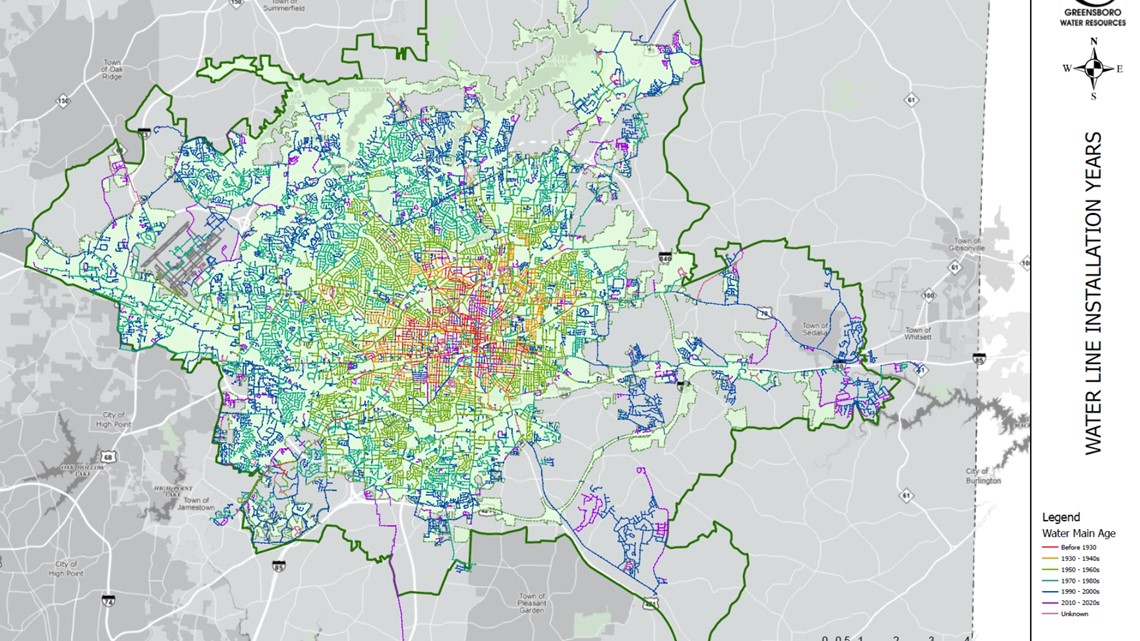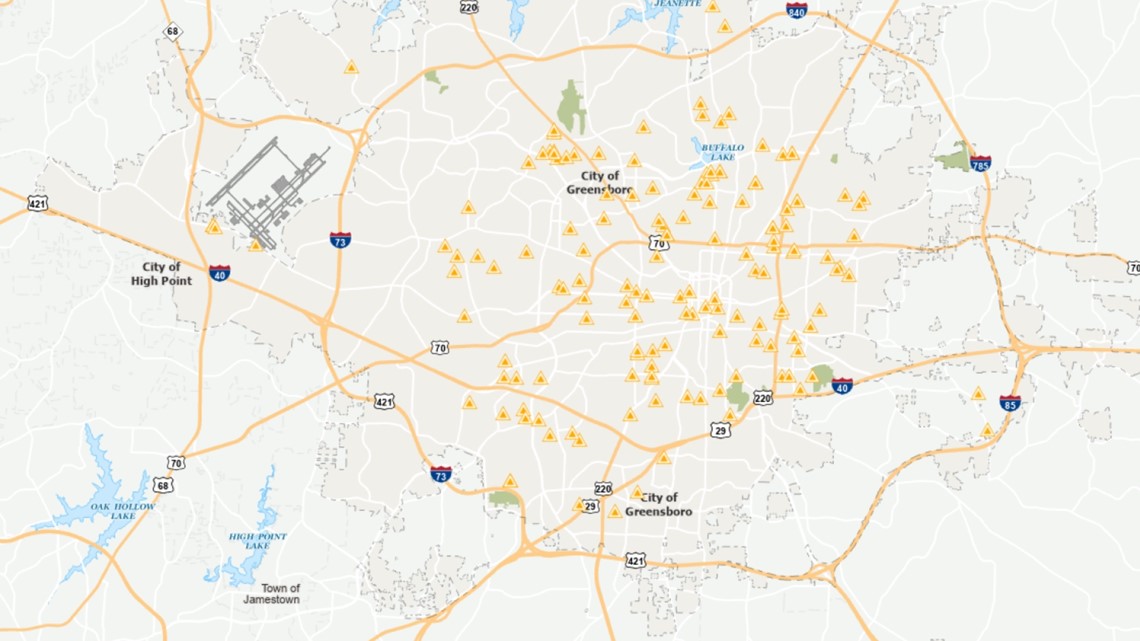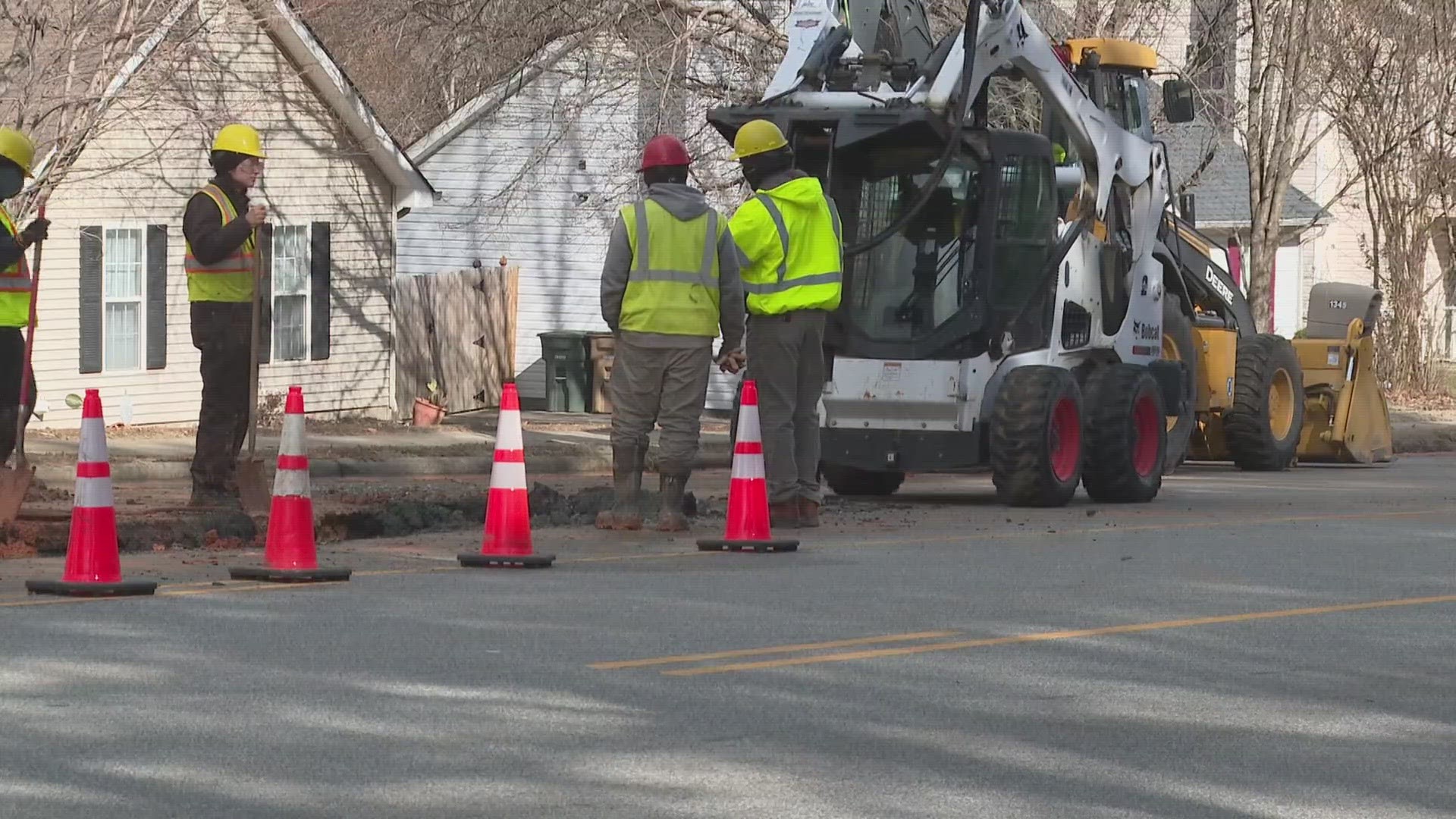GREENSBORO, N.C. — Over the last few weeks, the city of Greensboro has seen several large water main breaks.
Currently, more than 500 people are without water as crews work to get a break fixed on Lees Chapel Road. It's expected to be fixed by 9 p.m. Friday.
In light of the recent water main breaks across Greensboro, WFMY News 2 took a closer look at the city's pipes and why we keep seeing pipes break.
This map shows the 1500 miles of water lines within the city of Greensboro. The lines in red, in and around downtown Greensboro, are roughly 100 years old. These lines were placed before the 1930's.


The lines in yellow were placed between 1930 and 1940. Both shades of green show the lines were put in between the 1950's and 80's.
Blue and purple are the newer lines, placed in the 1990s to now.
Many of the older lines used cast iron, which is beginning to show its age. Borchers said the material has since changed in the new pipes.
"I would say the majority of our brakes happen in the pipes that are made of old cast iron pipes," Borchers said. "We are now putting in primarily ductile iron pipe. If everything is done properly, meaning it's fabricated, constructed, installed, and operated all appropriately, you'd get 100 years out of the lines. Now, you could potentially with a cast iron pipe, but like I said the older infrastructure is just as not made for the stresses that we see of course with extreme temperatures and use and pressures."
According to the Greensboro Water Resources Director, Michael Borchers, as the city grows, the new locations have new pipes. These new lines can better handle the population growth Greensboro has seen over the decades.
"We have over 1500 miles of water lines within the city of Greensboro, in the surrounding area, most of it is buried," Borchers said. "You see hydrants and other things sticking up out of the ground to show you that in meters. Those water lines are of various ages, various sizes made of different types of materials and so what happens is we get different types of stressors that are placed on it. One of the bigger stressors is environmental."
As you can see from the map, most of these water lines are old and need to be replaced.
Borchers said that process takes a while because you have to dig up streets and roadways and everyday crews are dealing with emergency water line breaks.
"We're in our peak season for breaks when we see extremes and temperatures, highs, lows, it's those transitions," Borchers said. "It puts additional stress on our lines, the ground compresses when it gets colder, it expands when it gets warmer, and so all of those factors, as well as the how much water is in the line pressure-wise, those add up to in for our weak points, results in breaks."


This map shows the water main breaks in 2023. Borchers said there were 149 breaks in 2023, which is down from the 199 in 2022.
"We try to look at and forecast where are the weak points of our system, but it's difficult," Borchers said. "I can't guarantee if customers have a break or two, that they won't have a future one. But what we do is collect all of this data and we look at all of the breaks and go from there."
He said Elm Street is a great example.
Crews worked on North Elm Street, where the line was about 100 years old.
He said there were a good number of water line breaks on North Elm Street, where hospital and doctors offices are. He said they replaced a long stretch of that water line last year.
"When we see an uptick in a particular area or on a particular line, that triggers us and our engineering division to look and say, 'Is that a candidate for replacement or rehabilitation?"
Borchers said there should be fewer breaks as the weather transitions out of winter.
"Once we get through this February, hopefully, things will settle back down and our customers will see less inconvenience as it relates to breaks," Borchers said.
If you see water coming from an area, call the city at 336-373-2033 so crews can go fix the issue.

